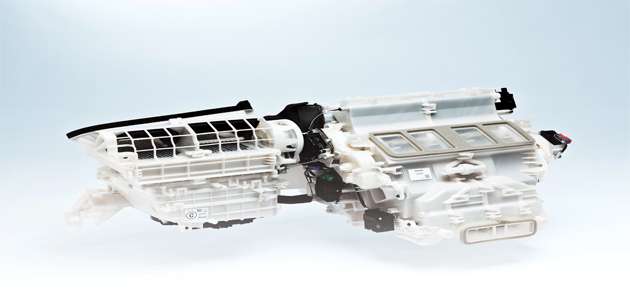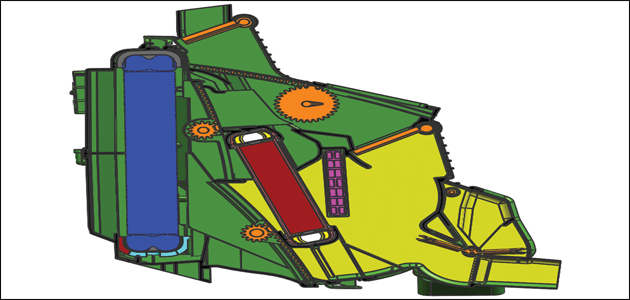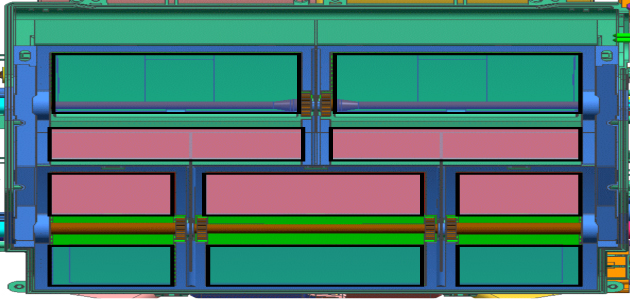
DENSO’s new system can separately control the climate in three different cabin zones, the driver, front passenger and rearseat areas, which can help improve overall fuel economy when the A/C is on.
“With this new A/C system, the heating/cooling can be off in unoccupied areas, and temperature can be individually adjusted according to personal preferences when more than one area is heated or cooled,” said Akio Shikamura, Senior Executive Director of DENSO’s Thermal Systems Business Group. “When the driver side A/C is being used only, the A/C system can save up to approximately 20% energy consumption on an annual basis compared with conventional models (based on vehicle tests conducted by DENSO), which helps improve the vehicle’s fuel efficiency.”

HVAC unit for the new A/C system
How it works
Internal structure of HVAC unit for right-hand drive vehicles


As in-dash space is limited, it is important for the new system to maintain the same size level as a conventional A/C system. With this in mind, the company developed a new internal structure for the heating, ventilation and air-conditioning (HVAC) unit. To separately control the climate of each area, DENSO divided the internal structure into five compartments with each compartment connected to specific air vents: the driver’s dashboard and the driver side front window, the driver’s legs; the front passenger’s dashboard and front passenger side front window; the front passenger’s legs; and, the rear seat.
DENSO conducted repeated tests and simulations in various conditions to provide the optimum climate control (depending on the cabin or external air temperature, this system may provide climate control in the front passenger and rear seat areas even when the vehicle is occupied only by the driver) and maintain occupants’ comfort – even in severely hot and cold temperatures.
When an A/C system is in heat mode, it uses a large amount of outside low-humidity air to ventilate the cabin and to prevent window condensation. Previously, the same amount of cabin air was lost externally. However, DENSO’s new system only uses outside air for the driver and front passenger’s dashboard and front window vents. Compared to conventional products, this reduces the amount of warm cabin air lost by half, which also helps to reduce the amount of energy needed to operate the A/C.
The new A/C system was launched in the Japanese market and in other regions of the world earlier this year.









